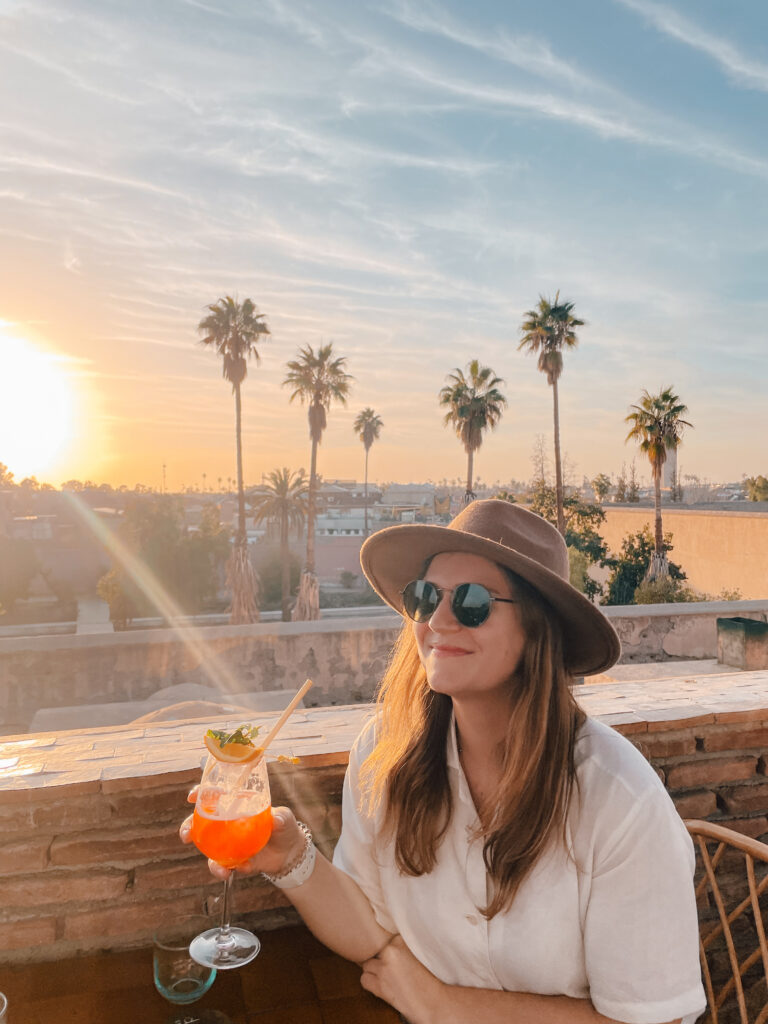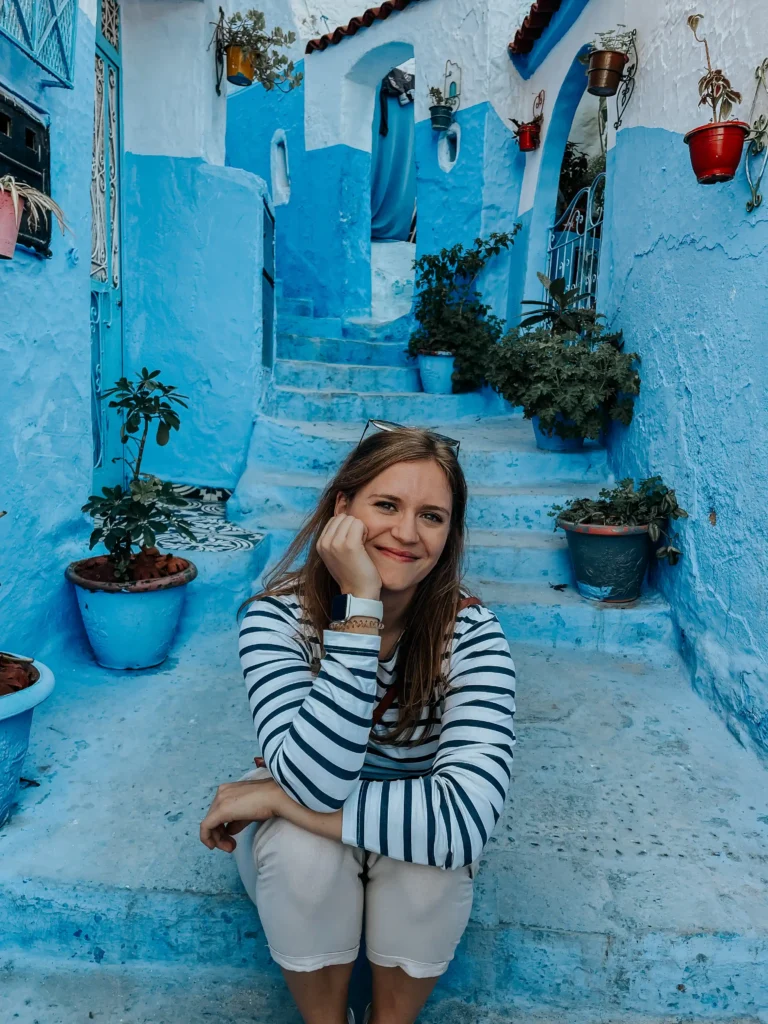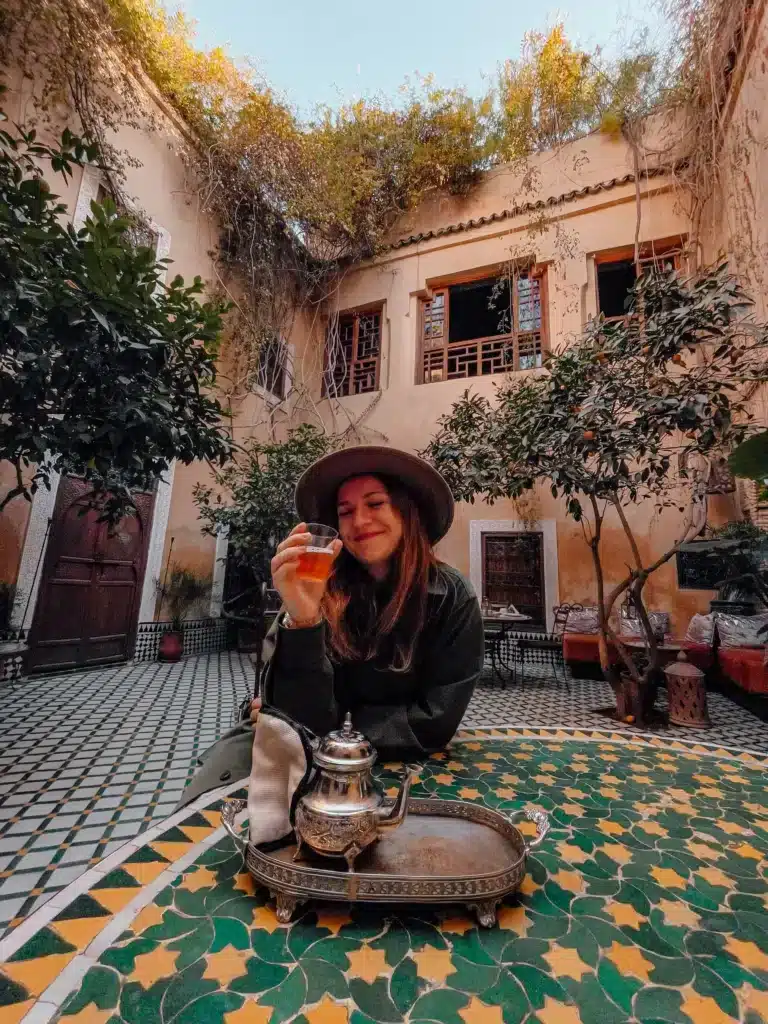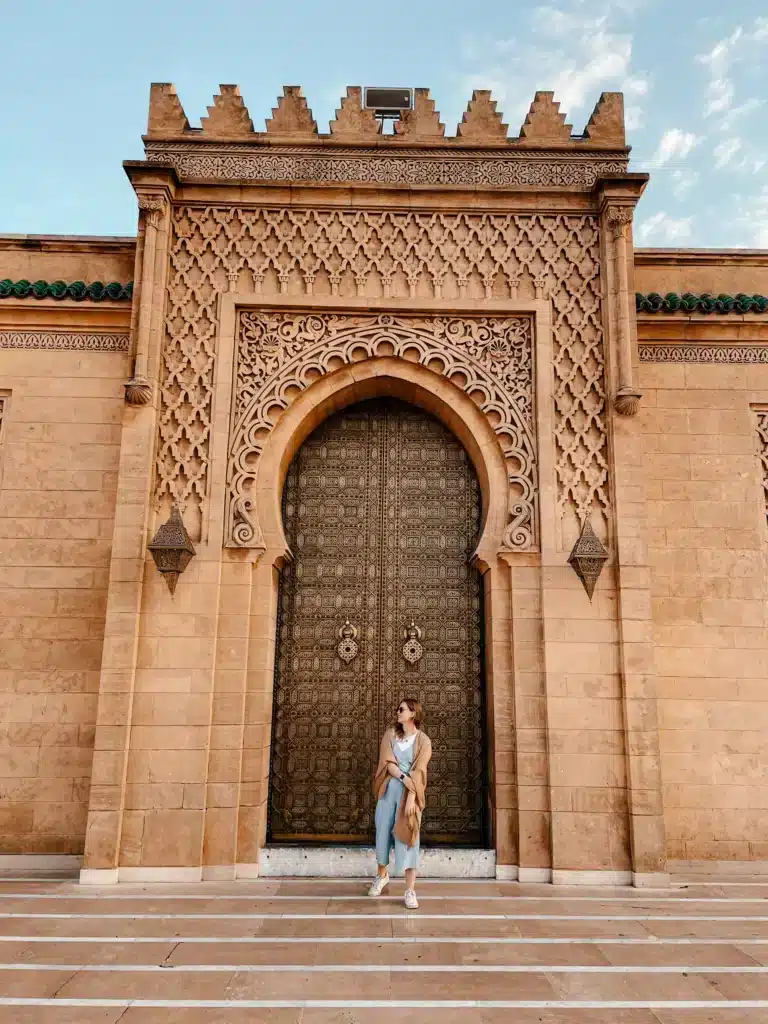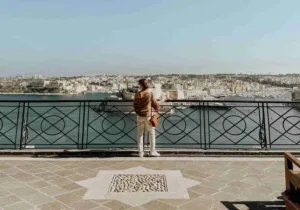Planning a trip to Morocco and wondering when is the best time to visit? Preparing for our own trip, I had spent a lot of time researching the optimal period to visit Morocco. We wanted to maximize our time without dealing with extreme temperatures. In the end, we opted for November—and we were very pleased with our choice!
You’ll discover all of the reasons below why Morocco in November is an excellent time to visit, but generally speaking, temperatures are comfortable, prices are affordable, and crowds are fewer – all of the perfect ingredients for a great trip!
To help you prepare for your trip, I’ll go over what it was like to travel to Morocco in November, including the weather conditions, packing tips, and must-see attractions. If you’re still unsure whether November is the month for your trip, I’ll also provide an overview of the other seasons in Morocco, highlighting the best qualities of each season.
Read on to start planning your Moroccan adventure!
*Disclosure: This article contains affiliate links. If you make a purchase after clicking one of these links, I earn a small commission at no extra cost to you.
Morocco in November: Overview
- 🇲🇦 Morocco in November: What to Expect
- 📆 What is the Best Time to Visit Morocco?
- 💡 Tips for Visiting Morocco
TL;DR – Quick Tips for First Time Visitors:
📆 November in Morocco is ideal for: visiting the desert, fewer crowds, and cheaper prices
☀️ Weather and temperature vary by the region (ie, coasts vs mountains vs deserts)
🏨 Visiting Marrakech? Check out these beautiful & affordable riads
👚 Use this Morocco packing list to help you prepare for your trip in November
🩺 Travel anxious-free by getting travel medical insurance
💰 Use this budget-breakdown to give you an idea of prices in Morocco
Morocco in November: What to Expect
Is November a Good Time to Visit Morocco?
Yes, November is an amazing time to visit Morocco! We found the weather comfortable throughout the day, with fewer crowds, lower prices, and the added bonus of tours still operating before the winter season.
While you can visit year-round, November allows you to enjoy everything Morocco has to offer—deserts, imperial cities, and coastal areas. During other seasons, the temperatures can become extreme, either too hot or too cold, and can prevent you from enjoying your visit to the fullest. The shoulder months of September to November are ideal for planning your trip.
YOU MIGHT ALSO LIKE: 2-week Morocco itinerary for first timers
Weather in November
Morocco’s varied landscape means you’ll notice distinct weather differences across its coasts and deserts. In November, expect mild temperatures, making it more comfortable for travelers as the country transitions into winter. Coastal and mountainous regions typically hover around 13°C (55°F), while inland areas can reach the low 20s°C (mid-60s°F). Overall, the temperatures in Morocco in November are mild and pleasant compared to other times of the year.
However, November also marks the beginning of the rainy season in Morocco, with increased chances of rain and wind, especially along the coast and in the north. One thing we noticed during our visit was the stark temperature differences: on most days, when the sun was out, we were out and about in t-shirts, but the moment we stepped into the shade or after sunset, temperatures dropped, and we needed to add another layer.

What to Wear in Morocco in November
When traveling to Morocco in November, it’s essential to be prepared for anything. Expect warm sunny days, chilly evenings, and the possibility of rain. The best items to pack include:
👚 Light layers for daytime temperatures
☔️ A waterproof raincoat for unexpected showers
👟 Comfortable walking shoes for exploring
☀️ Sun protection: hat, sunglasses, sunscreen, etc.
🧣 A few warmer items for cooler nights
When visiting traditional riads or remote areas like the Sahara desert, keep in mind that heating is often unavailable, so bringing warmer pajamas is also a good idea. On most days, we opted for light linen layers—either t-shirts or long sleeves— with a light jacket just in case. Sweaters for the evenings were also essential, but in hindsight, it would have packed an extra sweater for chilly mornings. Overall, we felt very comfortable throughout our trip!
Something very easy for many travelers to forget to pack is travel insurance. I’ll be honest, for the longest time, insurance was never on my mind, but I’ve had enough close calls to change my opinion. It’s crazy how easy and quickly something can go wrong! Specifically for our trip to Morocco, I was nervous about getting sick from the water, whether it be from forgetting to ask for no ice cubes or from fruit washed in local water, or something happening during our trip into the desert. The scenarios my brain was playing out were insane, so for peace of mind, we used SafetyWing.
We found SafetyWing to be super flexible for different types of travelers, from long-term digital nomads to everyday travelers. Personally, I loved that you can make your plan as extensive as you’d like with their adventure sports or electronics coverage add ons and honestly, their $0 deductible won me over! Check out their plans here!
READ MORE: Complete Morocco Packing List for First Timers
Crowds & Cost in November
November is considered shoulder season in Morocco, meaning you’ll encounter fewer tourists and more locals. This is a great time to visit since, as mentioned earlier, temperatures are comfortable, and you won’t have to battle with the summer crowds. September and spring are also excellent times to avoid the peak tourist season.
Visiting during shoulder season made our experience in Morocco enjoyable and affordable. We noticed lower prices for hotels and flights, along with increased opportunities to interact with locals. In fact, many people warned us about “pushy” behaviors in the souks, but during our visit in November, we encountered hardly any issues. Locals informed us that vendors tend to be more assertive in the summer months, since its their peak earning season, so we appreciated the more relaxed atmosphere.
PRO TIP: Book your accommodations ahead of time to find the best deals. Check out these beautiful & affordable Riads in Marrakech!
What to Do in Morocco in November
November is filled with some exciting festivals in Morocco! On November 18th, Moroccans celebrate Independence Day, a public holiday marking liberation from French rule. Expect festivities, parades, and possible closures in some areas.
Additionally, an international film festival takes place at the end of November in Marrakech, bringing visitors from around the world.
November is also an excellent time to visit the Sahara desert, with pleasant daytime temperatures and cool nights. This is also true for many of Morocco’s main tourist attractions, including Marrakech and Fes, as they are more enjoyable with fewer crowds. If you’re an adventure traveler, the shoulder season offers perfect conditions for hiking and trekking in the High Atlas Mountains.
YOU MIGHT ALSO LIKE: 3-day tour from Marrakech to Merzouga: whats it actually like?
What is the Best Time to Visit Morocco?
Spring (March to May)
Spring is considered to be one of the best times to visit Morocco as the country comes alive after the winter months. Similar to autumn, this shoulder season offers fewer tourists and lower prices, all while enjoying pleasant weather. A huge bonus of visiting in spring is that it marks the end of the rainy season, whereas autumn sees its beginning.
Spring in Morocco is perfect for trekking in the High Atlas Mountains, not only for the more favorable temperatures but for you’ll the wildflowers in bloom! Additionally, you can experience the Almond Blossom Festival in March and the Rose Festival in May – both sound so beautiful!
Summer (June to August)
Summer is typically the most crowded time in Morocco, coinciding with school holidays. However, it’s also the hottest season, with long, scorching days. Many travelers find it too hot to enjoy outdoor activities for extended periods of time, especially in the deserts.
What’s a great escape from the summer heat? Head to the beach! Summer is the ideal time for exploring Morocco’s beaches, which are gifted with refreshing breezes, making the heat more bearable. This season is also perfect for kitesurfing, especially in coastal cities like Essaouira, where you can see many surfers and kitesurfers out and about.
YOU MIGHT ALSO LIKE: Summer in France: the BEST places to visit
Fall (September to November)
The fall shoulder season is another excellent time to visit Morocco, allowing you to escape the heat and crowds. Like spring, it’s perfect for trekking the High Atlas Mountains, exploring normally crowded cities like Marrakech, or discovering the beauty of the Sahara. In fact, fall is the best time to experience the Sahara, as you can enjoy warm, sunny days perfect for outdoor adventures!

Winter (December to February)
Winter is the rainy season in Morocco and also happens to be the months with the coldest temperatures. The High Atlas Mountains will start to see snow, creating excellent opportunities for skiing. Except around the holiday season, winter is one of the least crowded seasons in Morocco, allowing you to enjoy a more authentic experience away from tourists.
Winter is also the ideal season for surfers. Although temperatures are chilly and a wetsuit is usually necessary, the Atlantic swells are at their peak during this time, making it perfect for experienced surfers. Beginner surfers are advised to visit in the fall when the swells are milder.
Ramadan in Morocco: What to Expect
Since Morocco is an Islamic country, it’s important to be aware of Ramadan, the holy month of fasting. Ramadan follows the Islamic Lunar calendar, meaning the dates shift each year, so it can take place during any month of the year. During Ramadan, Muslims fast from sunrise to sunset, only breaking their fast with a light meal known as Iftar at the end of the day.
If you’re traveling to Morocco during Ramadan, here are a few things to keep in mind:
- Business Closures: Many businesses, including restaurants, may close during the day to accommodate those who are fasting. In popular tourist destinations, like Marrakech, some businesses will remain open but may have reduced hours.
- Respecting Local Customs: It’s important to avoid or be discreet while eating or drinking in public during daylight hours to show respect for those who are fasting.
- Plan Ahead: Research business hours and meal availability beforehand to avoid disappointment. You’ll notice a quieter, more relaxed atmosphere during Ramadan, as locals adjust their schedules around fasting and prayer times.
- Experience Iftar: Take the opportunity to join in and enjoy the festive meal with locals at sunset. Many restaurants and hotels offer special Iftar menus, giving you a chance to experience Moroccan cuisine and traditions.
Traveling to Morocco during Ramadan offers a unique cultural experience, and with a little preparation, it can be just as enjoyable as traveling any other time of the year.
Tips for Visiting Morocco
💧 Don’t drink the tap water in Morocco. As a tourist, avoid drinking the tap water in Morocco. While locals may be accustomed to it, visitors should stick to filtered or bottled water. This applies not only to drinking water but also to ice cubes in drinks, brushing your teeth, and eating raw fruits and vegetables washed with tap water. Many riads provided us with bottled water, but to avoid relying on plastic, consider using water purification tablets or a water bottle with a built-in filter.
🩺 Don’t forget travel insurance! As mentioned above, for our two-week Morocco road trip, we used SafetyWing for coverage, and it was both affordable and super easy to use. If you’re curious about what makes SafetyWing stand out, I’ve written a full, honest review breaking down their Nomad Insurance. Check it out below!
READ MORE: SafetyWing Nomad Insurance: my complete and honest review
👚 Dress respectfully. Morocco is an Islamic country, and dressing modestly is an important way to show respect for local customs. No matter what time of year you visit, aim to wear loose-fitting, modest clothing that covers your shoulders and knees. Packing a shawl or scarf is an easy solution to ensure you can cover up when needed—especially when visiting religious or traditional sites.
READ MORE: Morocco Travel Tips & FAQs: Everything you need to know before visiting
Enjoy your Moroccan Adventure!

Hopefully by now you feel fully prepared for your trip to Morocco in November, with a clear idea of what to expect. If November isn’t the right fit, I hope this guide has helped you choose a season best suited for your travels!
There are so many things to love about Morocco and you don’t want to miss enjoying them because the weather or crowds were interfering. Choosing best time to visit ultimately depends on your availability and preferences, but I hope that this article has helped you prepare so you can make the most out of your time in Morocco!
Looking for more details? Check out my 2-week Morocco itinerary to see exactly how we spent our time and planned the perfect trip!

